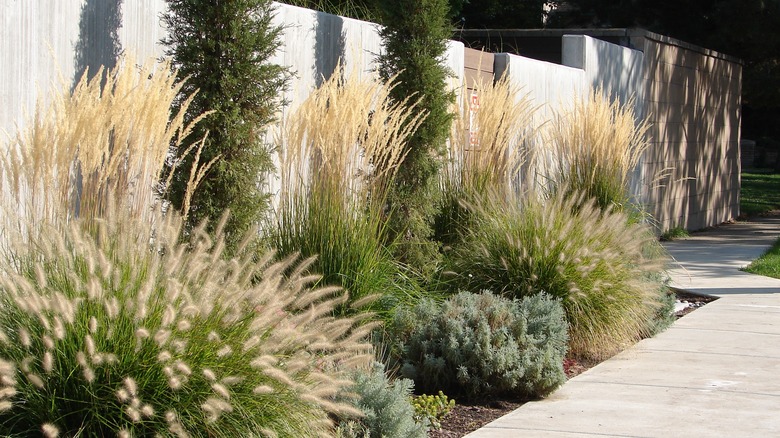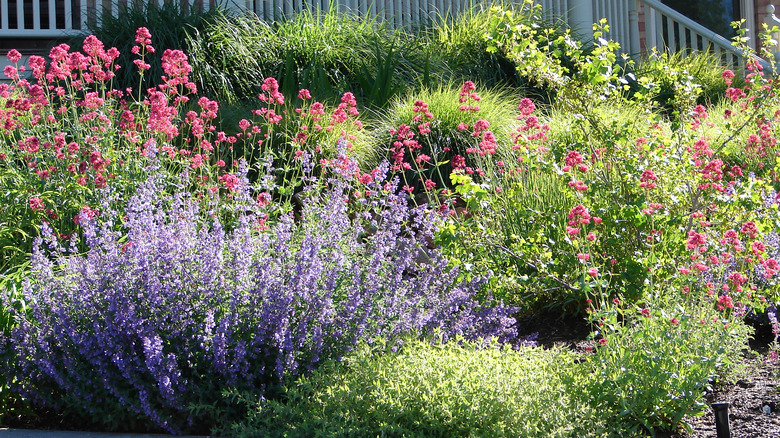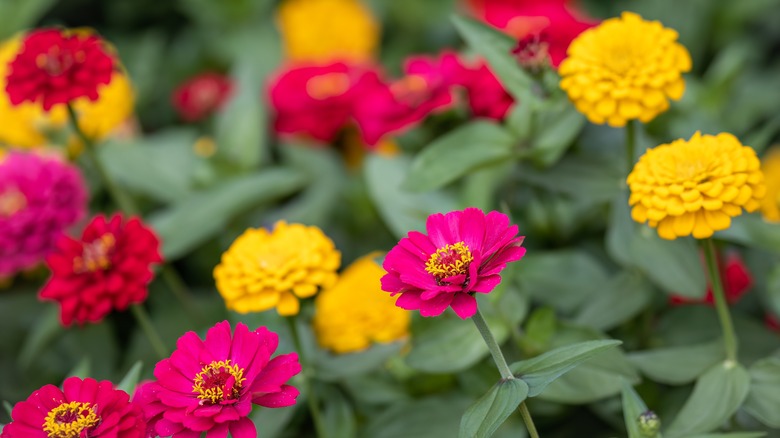The Best Time To Plant Drought-Tolerant Plants
Gardens can be key to creating an inviting and charming outdoor space for your home, but only some live in areas with prime weather conditions, and not everyone has a green thumb. Maintaining a garden can require lots of tentative care and a rigorous watering schedule, but if you live in dry areas like Utah, Nevada, California, and Kansas, it could be a challenge to keep up with certain plants' irrigation needs. Fortunately, you can add many drought-tolerant plants to your yard; you just need to be sure to plant them at the right time.
Depending on whether or not it's an annual or perennial, spring and fall are the best times to implement drought-tolerant plants into your garden. You'll be past the harsh frosts of winter at the start of spring, avoiding the scorching soil amid summer, and staying ahead of the soon-to-be frozen ground at the end of autumn, ensuring that the plants will have the easiest time adapting to their new space. As you look for drought-tolerant flowers, shrubs, and other plants to add to your property, you can often identify many by if their leaves are thin and narrow, waxy, velvety, or grey/sliver in coloration. Many plants that can go long periods with little to no water will also frequently have taproots and slow growth rates.
Planting drought-tolerant plants
Drought-tolerant plants can thrive with such little water because they save up energy in their root systems. Some plants will also store water in leaves or rhizomes, but most importantly, plants that withstand drought have deep and strong roots. Deeply rooted plants are able to hold water and nutrients more effectively and draw resources from the soil, helping them survive in scarce conditions. Because of how essential root health is to their survival, it's important that they are planted at the correct times. Annuals do best when planted after the last frost and before the heat of summer commences. You want consistently warm temperatures day and night, nothing too hot or cold. It's less tedious for perennials, and you'll just want to ensure the soil is loose and flexible for planting.
The soil you choose will also play a vital role in the health of drought-tolerant plants. Well-draining, aerated soil is necessary, as these plants will be at high risk of root rot if too much moisture is held. Rocky and sandy mixes will make for happy growth, along with proper weeding and mulch application. Given that drought-tolerant plants need to save as many nutrients as possible, minimizing any weeds that may be taking away from your garden is essential. Laying mulch down will help regulate temperatures, especially when keeping things cooled down in the summer's sweltering sun.
Drought-tolerant plants to add to your garden
Xeriscaping is the practice of leaning towards a more drought-friendly garden, replacing bright green grass with ornamental ones, like fountain and pampas grass, and adding rockier, sandier soils for a garden that primarily consists of plants that won't need much water to survive. Of course, the most common plants you'll hear about when it comes to xeriscaping are cacti and succulents, and while these are excellent choices, many other plants will fit a more conventional garden appeal. If you want drought-tolerant plants but don't want to lose the colorful and lush look, consider planting moss roses, lavender, yarrow, sweet potato vine, trumpet vine, and zinnias.
For anyone whose garden consists of herbs and produce for cooking, there are many vegetables and herbs that make great additions to a xeriscape, such as sage, peppermint, rosemary, and thyme. Vegetables like zucchini, tomatoes, okra, pole beans, and cowpeas won't need as much water to thrive as other crops might. Unconventional plants can give your drought-tolerant garden a unique appeal with living stones, otherwise known as lithops, or Venus flytraps, which may not be as resistant as others but are still quite hardy. Regardless of which aesthetic you are framing your garden to be, there are vast amounts of different plant types that will help save water and require little maintenance.


